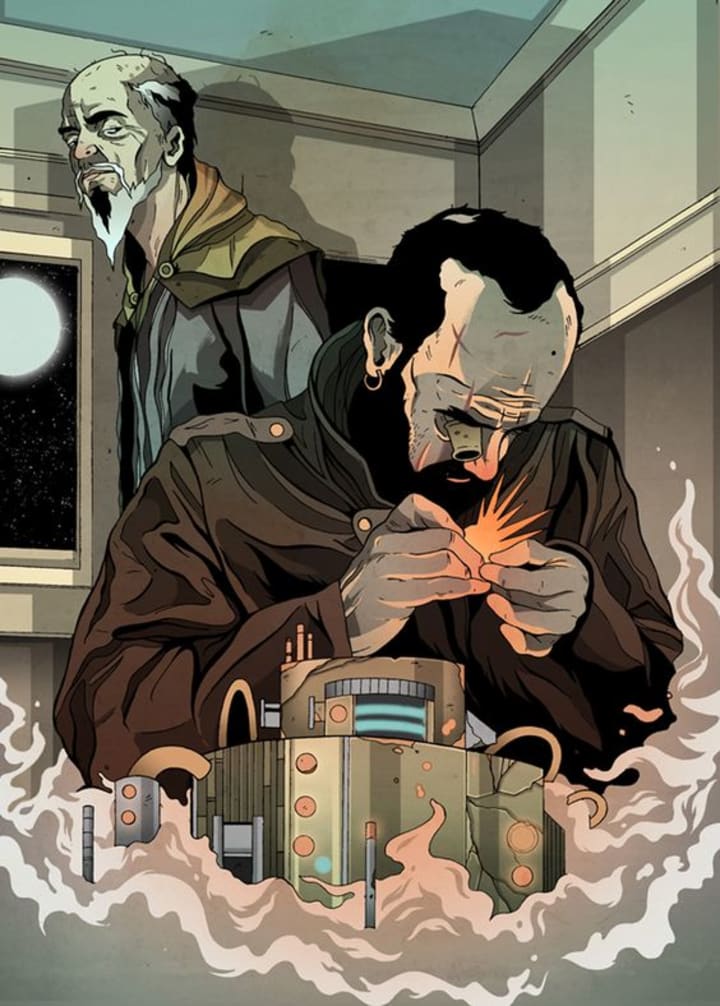


They are also lighter-skinned than most humans on other worlds, but this is no longer viewed as significant. The relationship between the two planets is analogous to the situation between European imperial powers and their colonies during the 19th century: native Florinians are forced to work in kyrt fields and are treated as an inferior race by the resident Sarkites. Sark derives great wealth from kyrt, a natural plant fiber which is extraordinarily useful and versatile, but which cannot be grown on Sark or on any planet other than Florina. The independent planet Sark rules, and exploits, the planet Florina which orbits the star located nearest to Sark's sun. The approximate date is around the year 11,000 AD (originally 34,500 AD, according to Asimov's early 1950s chronology), when the Trantorian Empire encompasses roughly half of the galaxy. The story takes place in the context of Trantor's rise from a large regional power to a galaxy-wide empire, unifying millions of worlds. Each occurs after humans have settled many worlds in the galaxy, after the second wave of colonization that went beyond the Spacer worlds, and before the era of decline that was the setting for the original Foundation series.Īsimov stated in 1988 in the "Author's Note" to Prelude to Foundation that book #6 in the Foundation universe chronology was The Currents of Space (1952) and that it was "the first of my Empire novels." Book #7 was The Stars, Like Dust (1951), which was "the second Empire novel." It is the second (by internal series chronology) of three books labeled the Galactic Empire series, but it was the last of the three to be written. The Currents of Space is a science fiction novel by the American writer Isaac Asimov, published in 1952.


 0 kommentar(er)
0 kommentar(er)
